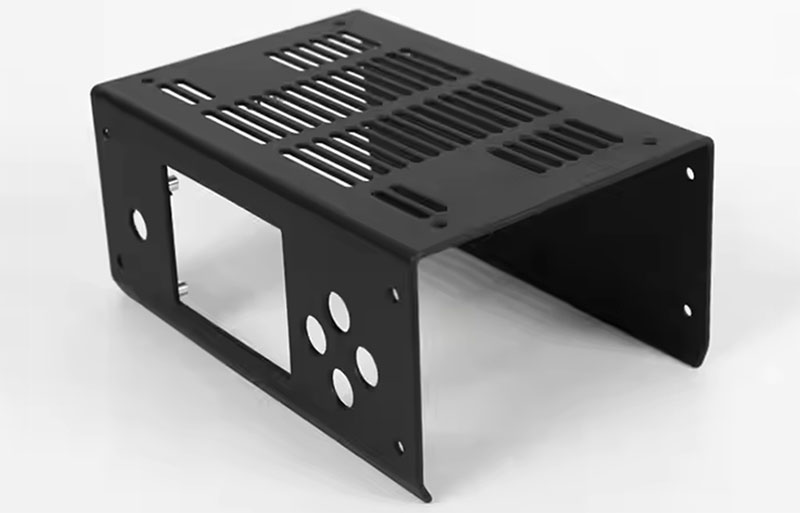There are various materials commonly used in sheet metal forming, and the selection of these materials is mainly based on factors such as the specific function, usage environment, and cost of the product. Here are some common sheet metal forming materials:

- Cold rolled sheet (SPCC)
Characteristics: Cold rolled sheet is a steel plate material made through cold rolling process, with stable thickness and excellent processing performance. It is commonly used for electroplating and baking paint parts, with low cost and easy molding, but prone to rusting.
Application: Widely used in fields such as mechanical manufacturing and automotive manufacturing. - Hot rolled thin plate (SHCC)
Characteristics: Hot rolled plate is a steel plate rolled at high temperature, with a thickness generally above 3.0mm. It is mainly used for processing electroplated and baked goods, with low processing costs but difficult to form, and is mostly used for flat parts.
Application: Applied in fields such as construction and machinery. - Galvanized steel plates (SECC, SGCC)
Characteristics: Galvanized steel sheet is made on the basis of cold-rolled steel coil through processes such as degreasing, acid washing, electroplating, etc. It has good electroplating performance and corrosion resistance.
Application: Widely used in industries such as home appliances, construction, and automobiles. - Stainless steel
Characteristics: Stainless steel has good corrosion resistance, high temperature resistance, and aesthetic properties. According to specific types (such as SUS304, SUS316, etc.), their corrosion resistance, heat resistance, and mechanical properties vary.
Application: Widely used in kitchenware, medical equipment, construction, chemical industry and other fields. - Aluminum plates and profiles
Characteristics: Aluminum is a lightweight metal with good thermal conductivity, electrical conductivity, and ductility. Aluminum plates (such as 6061 hard aluminum, 5052, etc.) and aluminum profiles are widely used in sheet metal processing.
Application: Used for manufacturing various lightweight structural components, heat sinks, shells, etc. - Copper and copper alloys
Characteristics: Copper and copper alloys have good electrical and thermal conductivity, as well as a certain degree of corrosion resistance. Purple copper (pure copper) and brass are common copper alloy materials.
Application: Mainly used for making conductive materials, decorative parts, etc. - Other materials
Tinplate: Low carbon steel electroplated with tin, commonly used for making packaging materials, preventing EMI shrapnel, etc.
Spring steel: Medium carbon steel containing manganese, chromium, silicon and other alloy steels, with good elasticity and mechanical properties.
Magnesium alloy: one of the lightest metal structural materials, with high compressive strength, fatigue and impact resistance, but poor corrosion resistance.
In summary, commonly used materials for sheet metal forming include cold-rolled thin plates, hot-rolled thin plates, galvanized steel plates, stainless steel, aluminum plates and profiles, copper and copper alloys, etc. When selecting materials, it is necessary to comprehensively consider factors such as specific product requirements, usage environment, and cost.


